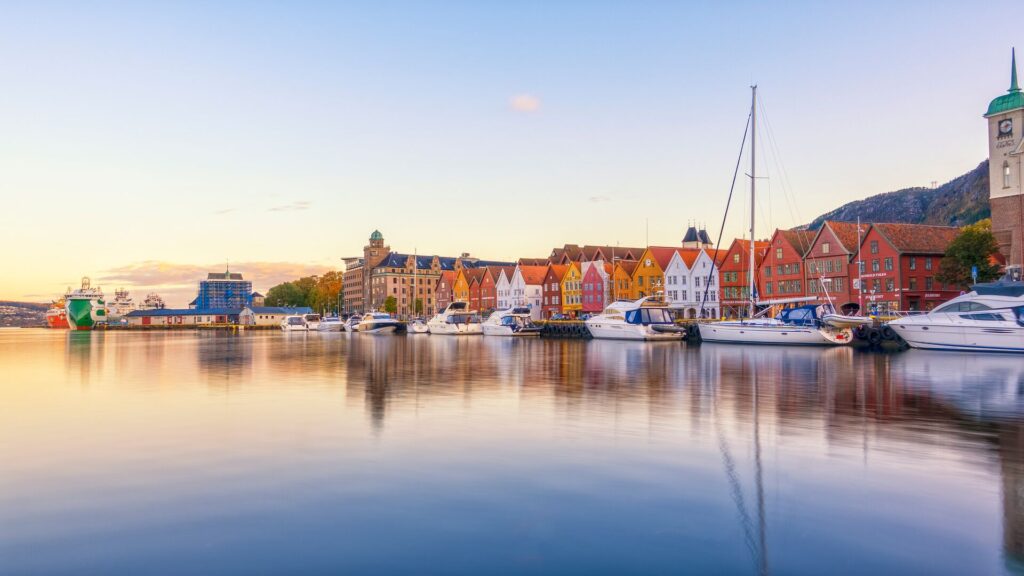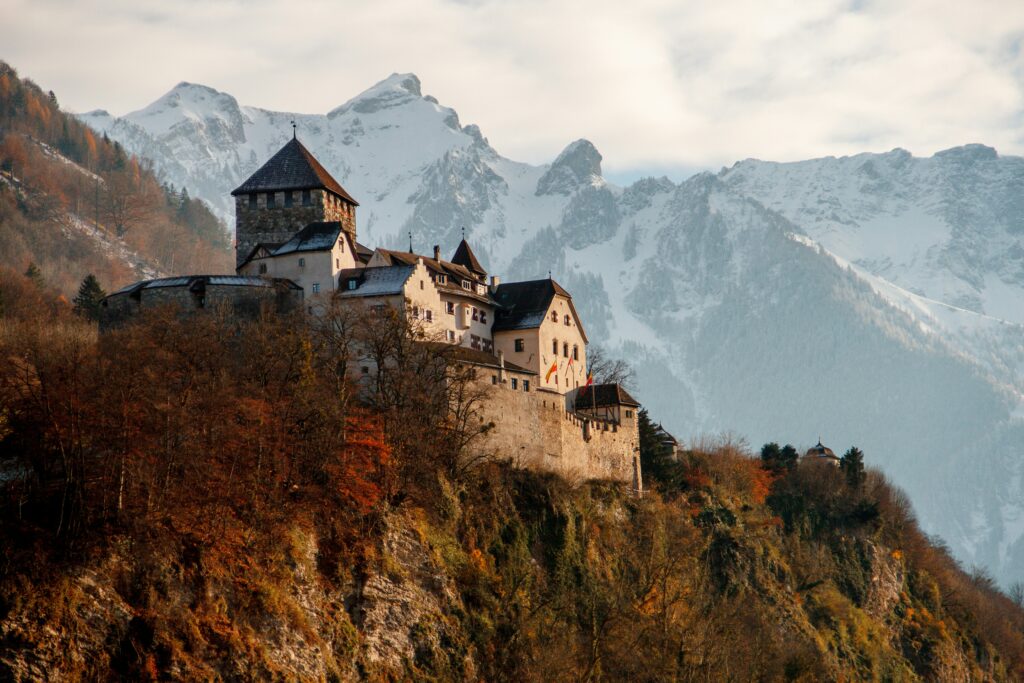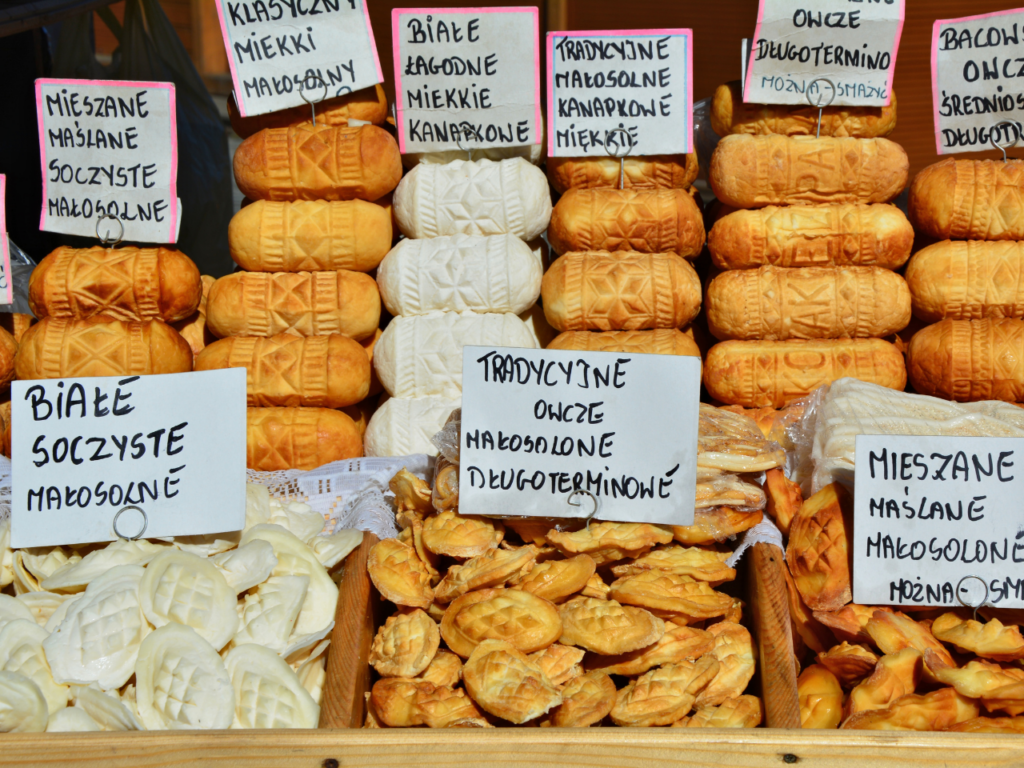Nestled on the north-eastern coast of Sicily, Italy, the ancient town of Taormina stands as a living testament to Sicilian history. As you traverse the ancient streets, each cobblestone and each corner holds a story from the past, transporting visitors to bygone eras.
From its Greek origins to its Roman and medieval influences, and the interplay of various cultures, Taormina plays a fundamental role as one of the most important archaeological locations in Italy. We invite you to take a walk in the footsteps of DH Lawrence, Sigmund Freud and Greta Garbo, who have all called this beautiful town home.
Discover this on: Sicily in Depth, Grand Italy & Sicily
A walk back through time: Corso Umberto I
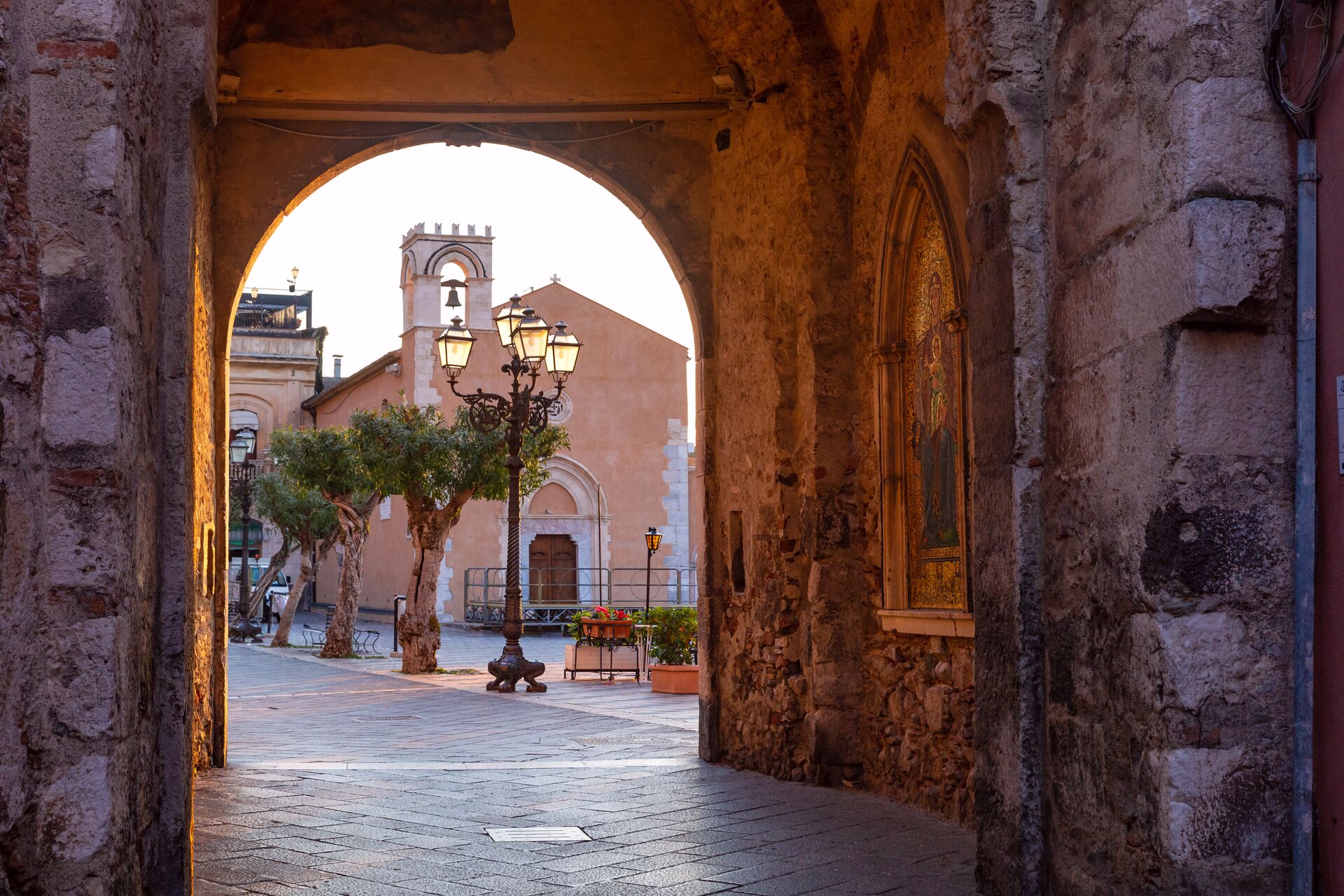
As you explore Taormina’s narrow streets and alleyways, you’ll encounter the medieval charm of Sicilian history that has been preserved through the ages. The Corso Umberto I, the town’s main thoroughfare, is lined with medieval buildings, churches, and shops, providing a glimpse into the life of the town’s residents across centuries. Meandering along this street, you’ll sense the layers of Sicilian history woven into the fabric of Taormina.
Corso Umberto I pays homage to Umberto I of Savoy, who reigned as Italy’s king from 1878 to 1900. This bustling street, once a segment of the historic Via Valeria, traversing the city before descending to the sea, served as a vital link between Messina and Catania.
For travel inspiration: Italy destination guide
Greek Origins: The incredible Teatro Antico di Taormina
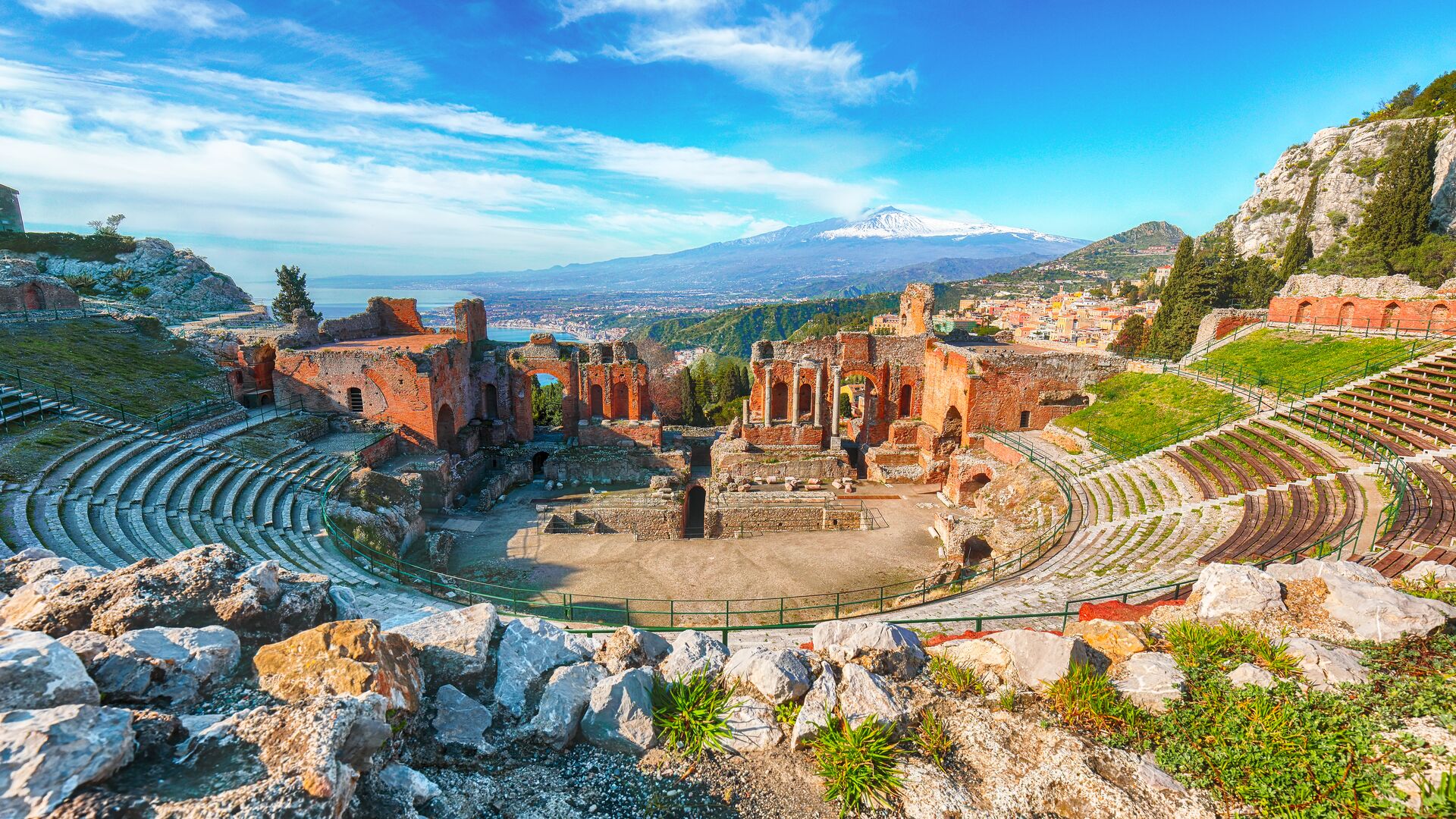
As you wander through Taormina’s cobblestone streets, the most iconic testament to its ancient past stands tall – Teatro Antico di Taormina or Greek Theatre. Carved into the hillside with a backdrop of the sea and Mount Etna, this ancient and famous amphitheatre offers a glimpse into the town’s Greek origins, thought to date back to the 3rd century BC.
The Greeks, fathers of Italian and European culture, settled their first colony in Italy in Taormina, in the Bay of Naxos, in 735 BC. The theatre stands as a proud testament to that time in Sicilian history. With seating for around 5,400 people, it was once a hub for dramatic performances and gladiatorial contests. Today it still hosts concerts and events against an awe-inspiring backdrop, connecting the present to its historic roots. A visit here is one of the highlight things to do in Taormina.
You may also enjoy reading: What’s so special about Sicilian cuisine? Everything, says Travel Director Mark
Roman Influence: Odeon and Naumachia
When the Romans won the first Punic War in 212 BC, they took over the rule of Taormina from the Greeks. The strategic location of Taormina, perched on a mountaintop with a commanding view of the sea, made it a coveted prize for both the Greeks and Romans. Beyond its natural beauty as a tranquil retreat, its military significance lay in its ability to provide an advantageous vantage point, allowing the inhabitants to anticipate and prepare for incoming sea-based attacks.
The Odeon is a small Roman theatre located behind the Palazzo Corvaja, on the main street of Taormina, the Corso Umberto. It was built in the times of the Roman Emperor Caesar Augustus Octavian and showcases the architectural achievements of that time. The theatre was an intimate venue for musical performances and gatherings, offering a contrast to the grandeur of the Greek Theatre.
Another Roman marvel lies in the Naumachia, a site believed to be an ancient Roman pool used for mock naval battles. A window in to Taormina history, the remnants of this structure stand as a reminder of the Roman fascination with grand spectacles and architectural prowess.
You may also like: Blossoming romance: why May is the best time to visit Italy
Byzantine and Norman Influences: Palazzo Corvaja
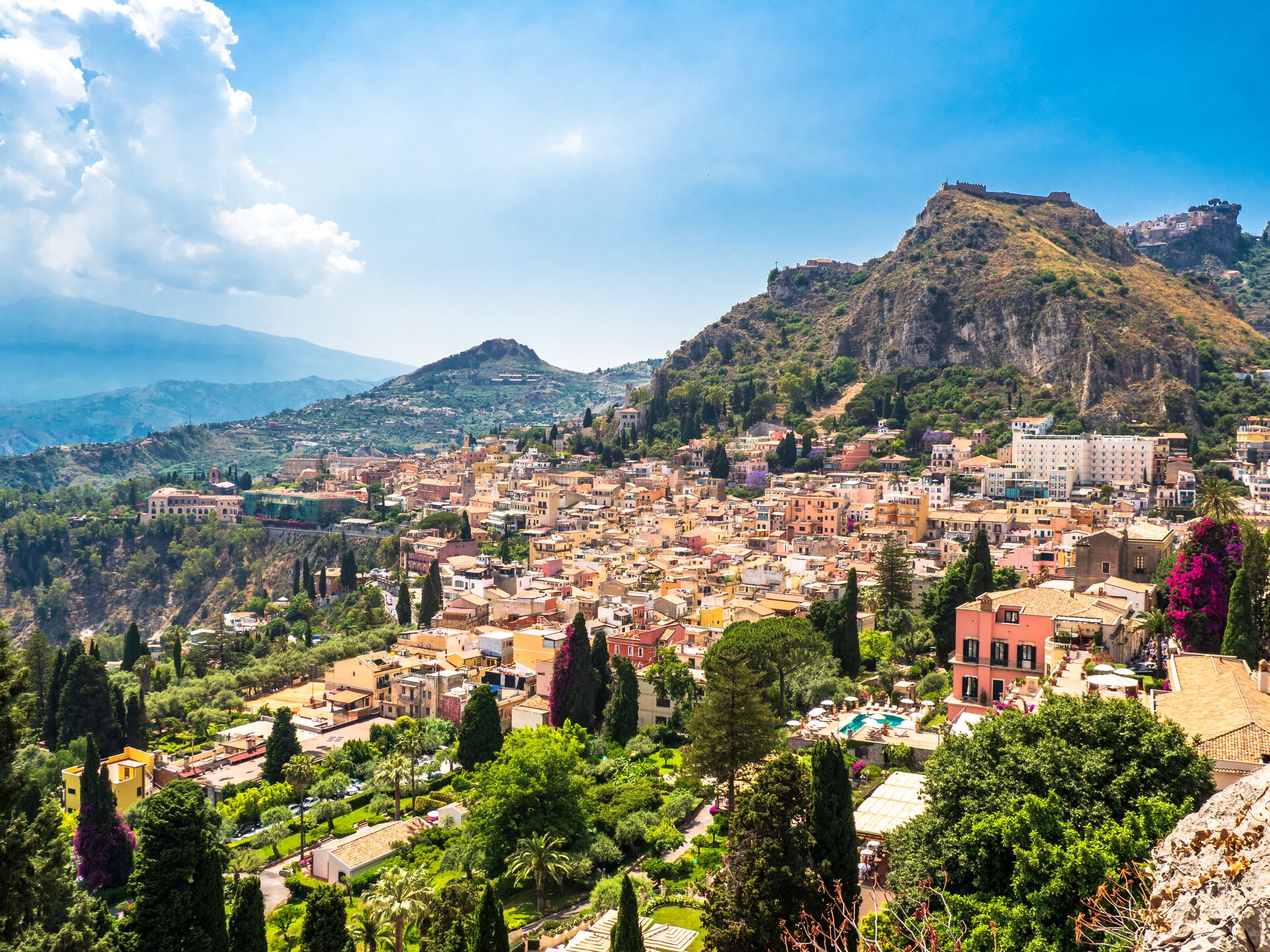
The Palazzo Corvaja stands as a splendid example of the town’s diverse historical influences. Built during the 15th century Byzantine period and later expanded by the Normans, the palace reflects a blend of architectural styles.
An important venue in Sicilian history, this is where the Sicilian Parliament met in 1411 during the Norman period. The right wing of the building was constructed for this purpose. Meetings were conducted in the large 15th century hall in the presence of Queen Bianca of Navarra, regent of the Kingdom of Sicily.
Today, the Palazzo Corvaja houses the Taormina Art Museum, offering visitors a chance to explore not only the palace’s history but also Sicilian art through the ages.
Arab and Spanish Influences: Duomo di Taormina
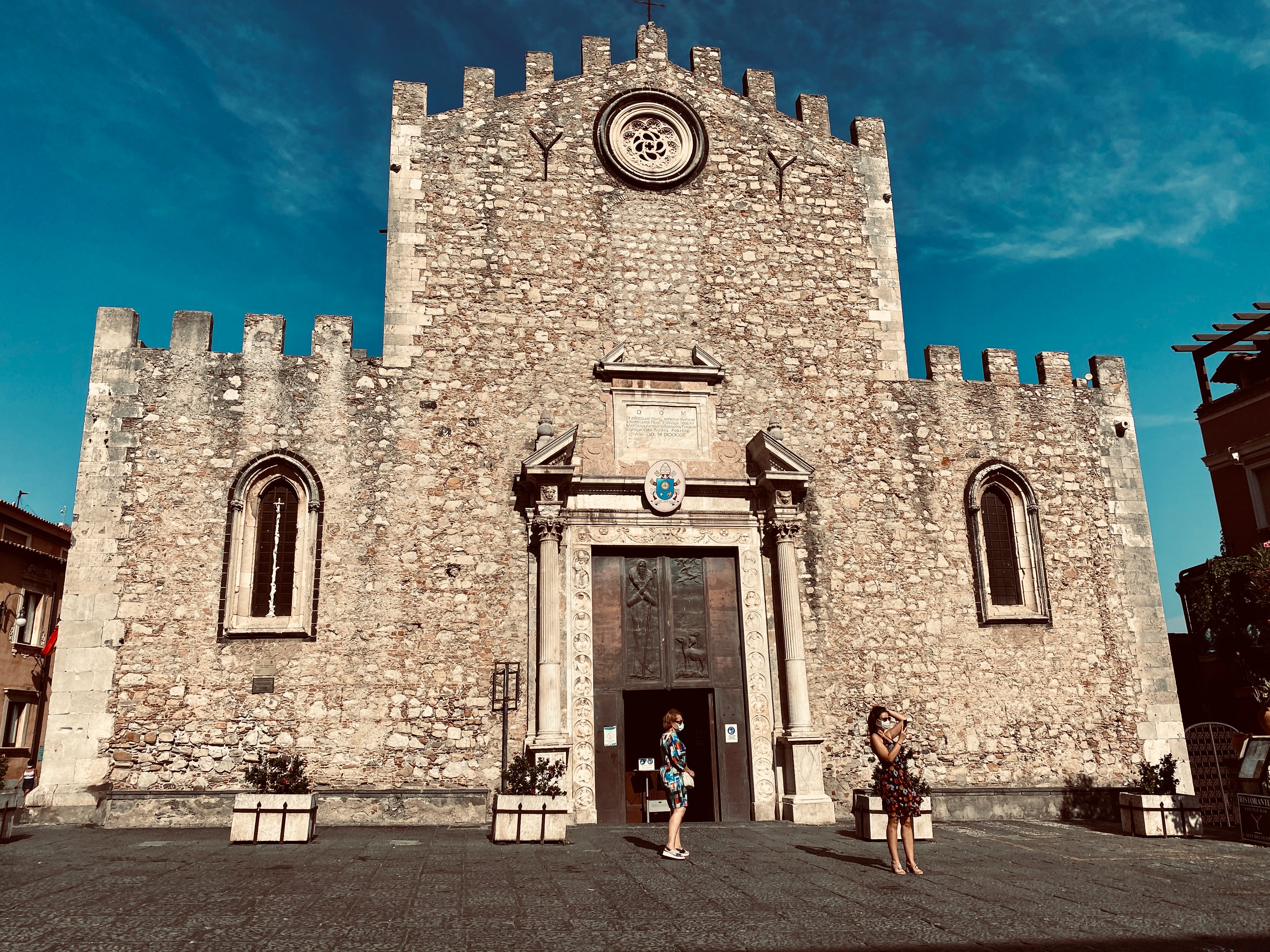
The Duomo di Taormina, or Cathedral of Taormina, captures the essence of the town’s Arab and Spanish influences. Originally built as a mosque during Arab rule, it was later converted into a Catholic cathedral when the Normans took control. The blending of architectural elements from different cultures paints a vivid picture of the town’s complex history, and of Sicilian history.
Built around 1400 on the remains of a thirteenth century church, duomo of Taormina has undergone several renovations. However, it preserves the distinct traits of Sicilian Romanesque-Gothic style in its external design. Crowned by battlements and a formidable bell tower, the duomo takes on the appearance of a fortress.
You may also like to read: 10 fascinating things you’ll learn on this 10 day Italy tour
Watching every step: Sicilian moor heads
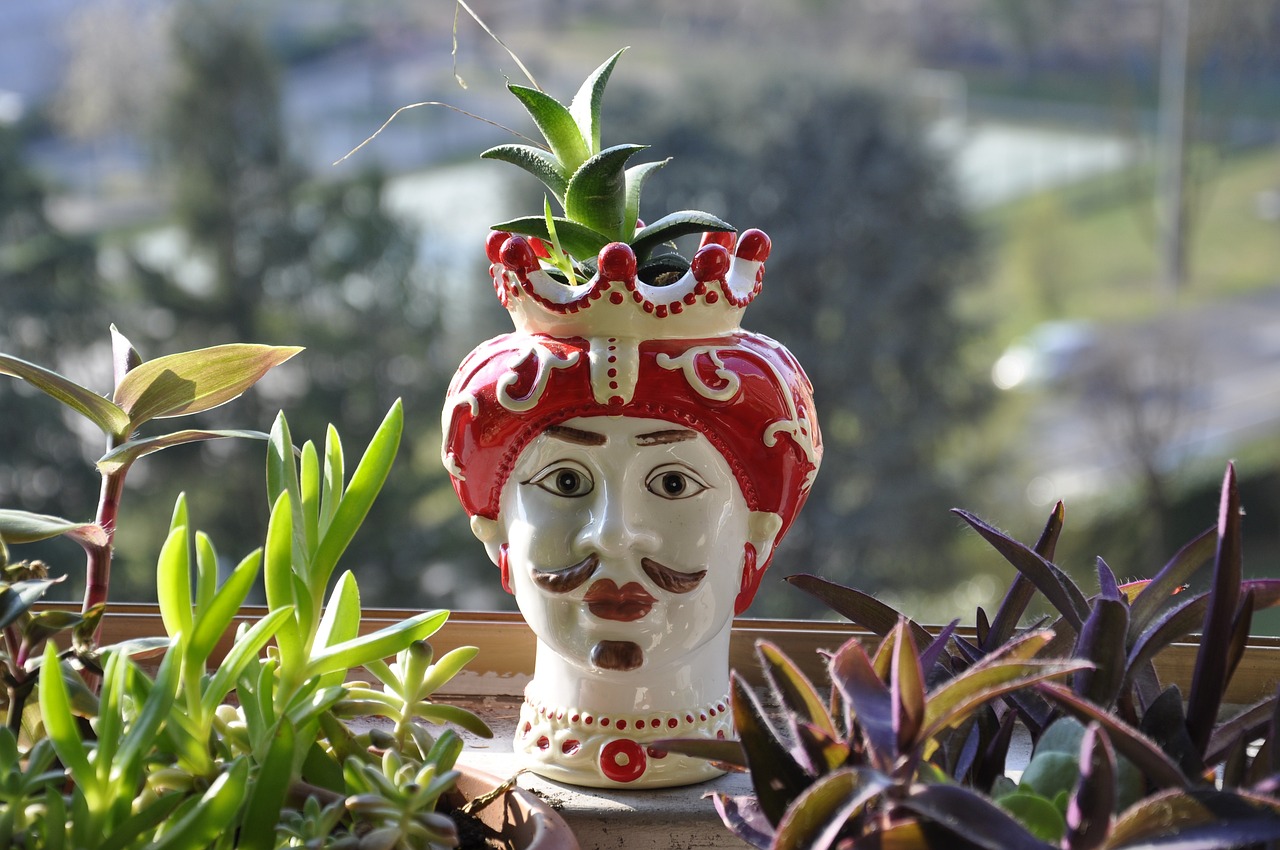
Any visitor to Sicily cannot fail to notice the Sicilian Moor Heads. Also known as Testa di Moro or Moorish Heads, these distinctive decorative elements are often found in Sicilian architecture, particularly in the forms of ceramics, sculptures and mosaics.
These iconic motifs typically depict the head of an individual, adorned with a turban or a headscarf. While their exact origins are debated, they have become synonymous with Sicilian culture due to their historical significance and prevalent use.
Historically, the Sicilian Moor Heads have been attributed various meanings, from commemorating victories over North African invaders to symbolizing the island’s multicultural past, reflecting the Arab, Norman, and Spanish influences that have shaped Sicilian history. Despite the potential positive interpretations, the imagery also carries associations with slavery and oppression, reminding us of the region’s complex history.
To peel back the layers of Sicilian history in Taormina, take a look at our premium guided tours to this beautiful Italian island.
